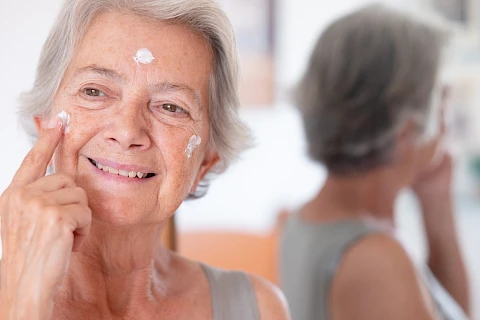
As caregivers, ensuring the well-being of seniors includes taking special care of their skin. Sun protection is crucial for seniors because aging skin is more susceptible to sun damage. With thinner skin and reduced ability to repair itself, seniors face a higher risk of sunburn, age spots, and skin cancer. We want to provide you with a checklist to help caregivers protect seniors from the sun's harmful rays through appropriate use of sunscreen, protective clothing, and more.
Choosing the Right Sunscreen
Selecting the right sunscreen for seniors is the first step in effective sun protection. Dermatologists recommend using a sunscreen with a minimum Sun Protection Factor (SPF) of 30. This level offers significant protection by blocking 97% of UVB rays. When purchasing sunscreen, look for products labeled "broad-spectrum." This means they protect against UVA and UVB rays, which helps prevent sunburn and reduce the risk of skin cancer. Caregivers should ensure it is spread evenly over all exposed skin areas to apply sunscreen effectively. Don't forget places like the ears, back of the neck, and tops of the feet. Reapply sunscreen every two hours or immediately after swimming or excessive sweating to maintain protection.
Protective Clothing Options
In addition to sunscreen, wearing protective clothing is a smart way to shield seniors from the sun. Clothes with an Ultraviolet Protection Factor (UPF) rating block out UV rays. UPF-rated clothing offers excellent protection, especially during outdoor activities. When choosing hats, opt for wide-brimmed styles that cover the face, ears, and neck. Sunglasses should have 100% UV protection to safeguard the eyes. Covering arms and legs with lightweight, long-sleeved garments provides further security against harmful rays without causing discomfort in the summer heat.
Creating Shade
Creating shade is another crucial strategy for sun protection. Umbrellas and canopies are portable shade options that can provide instant relief from direct sunlight when spending time outdoors. Planning outdoor activities in shaded areas can also make a difference. Parks often have tree-covered spaces perfect for picnics or strolls. Timing is key when it comes to sun exposure. Try to schedule outdoor activities before 10 a.m. or after 4 p.m. to avoid the sun at its strongest. By doing so, you can minimize the risk of sunburn and heat-related issues while still enjoying outdoor activities.
Monitoring Skin Health
Keeping an eye on a senior's skin health is a crucial part of sun protection. Regular skin checks help identify suspicious changes before they become serious. Look for new moles, growths, or any changes in color, size, or shape of existing ones. Other warning signs include rough patches, persistent itching, and lesions that do not heal. If you notice any unusual skin changes, consult a healthcare professional. Early detection helps in the effective treatment of sun damage or skin cancer.
Senior Helpers West Orange Can Provide Reliable Caregiver Services
Protecting seniors from the sun involves a combination of using the right sunscreen, choosing protective clothing, and creating shade. Regular skin checks enhance this protection by identifying issues early. As caregivers, it's our responsibility to prioritize sun safety for the seniors in our care. If you're looking for personalized caregiving services in Bloomfield, Caldwell, Cedar Grove, Essex Fells, or West Orange, contact Senior Helpers West Orange. Our dedicated team is ready to assist with all aspects of senior care, including sun protection and skin health. Let's work together to ensure a safe and enjoyable outdoor experience for our beloved seniors.